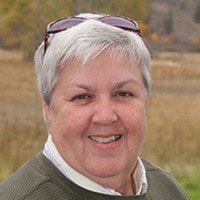Grand Forks is not the only community in B.C. with a deer problem. That’s one of the things learned by councillor Chris Hammett at the recent deer management workshop on Jan. 12 and 13 in Vancouver.
“I think this is the first time the provincial government—under pressure from the municipalities—has met with the communities regarding solutions that can be done,” said Hammett. “It was educational. I think we really needed to have someone there because I understand we were one of the groups lobbying to have provincial dialogue. So it was imperative that we send someone.”
The workshop was put on jointly by the provincial government and the Union of British Columbia Municipalities (UBCM). Hammett said the workshop was open to any interested communities in B.C. looking to learn more about urban deer.
Hammett said there were nine presenters talking on a number of subjects pertaining to urban deer. Presenters were from various government organizations ranging from the Ministry of Forests, Lands and Natural Resource Operations, SPCA, Ministry of Environment and WildSafeBC.
“It was good that the communities were able to communicate their own individual concerns and problems in their areas and get feedback from the provincial government,” she said. “The next step is to compile all that information from the workshop, and UBCM will present that to the provincial government with a report. From that we should expect a report back from the province within 90 days of that report as to what they’re going to provide to us.”
Hammett said the municipalities are hoping for better communication with the province moving forward.
“We’re hoping for education and a standardized communication package that all communities can use rather than having all the communities spend their own money to do all their own research,” she said. “This way it will be standardized across the province.”
Hammett said the workshop was also valuable for learning from other communities that have dealt with the same issue.
“We learned about the different options that are available,” she said. “We heard about how other communities have managed the deer and what they’ve experienced; how they’ve done it and the problems they’ve encountered.”
Hammett said that on the second day of the workshop, the attendees broke into groups and collaborated on deer issues.
Hammett said she learned a lot from nearby communities on what goes on with a deer cull.
“There’s a lot more that goes into a cull than what we realize,” she said. “There are more restrictions. Every community has to do due diligence in regards to monitoring, collaring, surveys, community opinion, before getting a permit.”
The attendees talked about other methods of controlling deer populations such as sterilization, contraception, translocation and hazing.
“These are other methods that have been tried and are still being researched,” said Hammett.
She said she was unfortunately not able to meet with the government one on one and get answers related to Grand Forks’ deer problems.
“I couldn’t get any promises from anyone,” she said. “Personally, I wanted to know what responsibility the provincial government was going to take and suggested that perhaps actual culls could be turned over to Fish and Wildlife as part of their responsibility. Of course, there would be shared expenses involved.”
Hammett said that deer is a provincial responsibility; however, the municipalities are the ones causing the problems by encouraging the deer by not enforcing the bylaws and people feeding them.
“I know people enjoy seeing the animals up close and it’s nice to live in harmony with nature—but when people start feeding them it becomes unnatural and they won’t go back to their natural migration patterns,” said Hammett. “There are a lot of social issues involved.”
